Abstract
Eight single-strain lactic streptococci, three commercial cheese starters, and six lactic acid bacteria isolated from yoghurt were examined for their susceptibility to penicillin, cloxacillin, tetracycline-hydrochloride and streptomycin. The ranges of the antibiotics causing 50% inhibition of the bacteria were (μg/ml): penicillin, 0.009 to 0.20; cloxacillin, 0.24 to 2.50; tetracycline, 0.09 to 0.60; and streptomycin, 0.35 to 13.0. The average concentrations required to cause 50 and 100% inhibition of the cheese starters were (μg/ml): penicillin, 0.12 and 0.26; cloxacillin, 1.91 and 3.9; tetracycline-hydrochloride, 0.13 and 0.36; and streptomycin, 0.59 and 2.06. All the cocci were about equally susceptible to tetracycline, and all organisms were more resistant to cloxacillin than penicillin. The yoghurt isolates were more resistant to streptomycin and more susceptible to penicillin than the cheese starters. The 2, 3, 5-triphenyltetrazolium chloride test, using Streptococcus thermophilus BC as assay organism, does not detect low levels of streptomycin in milk. However, it is useful in detecting cloxacillin residues.
Full text
PDF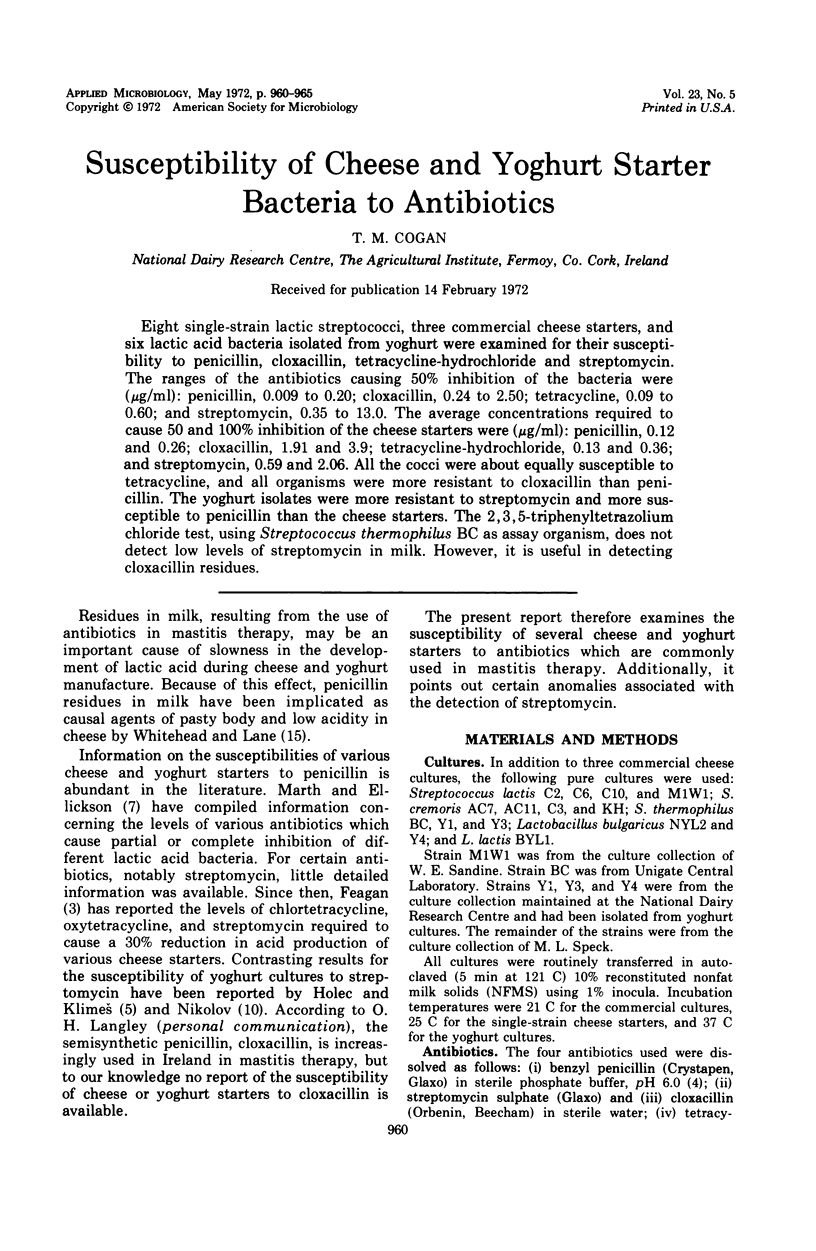
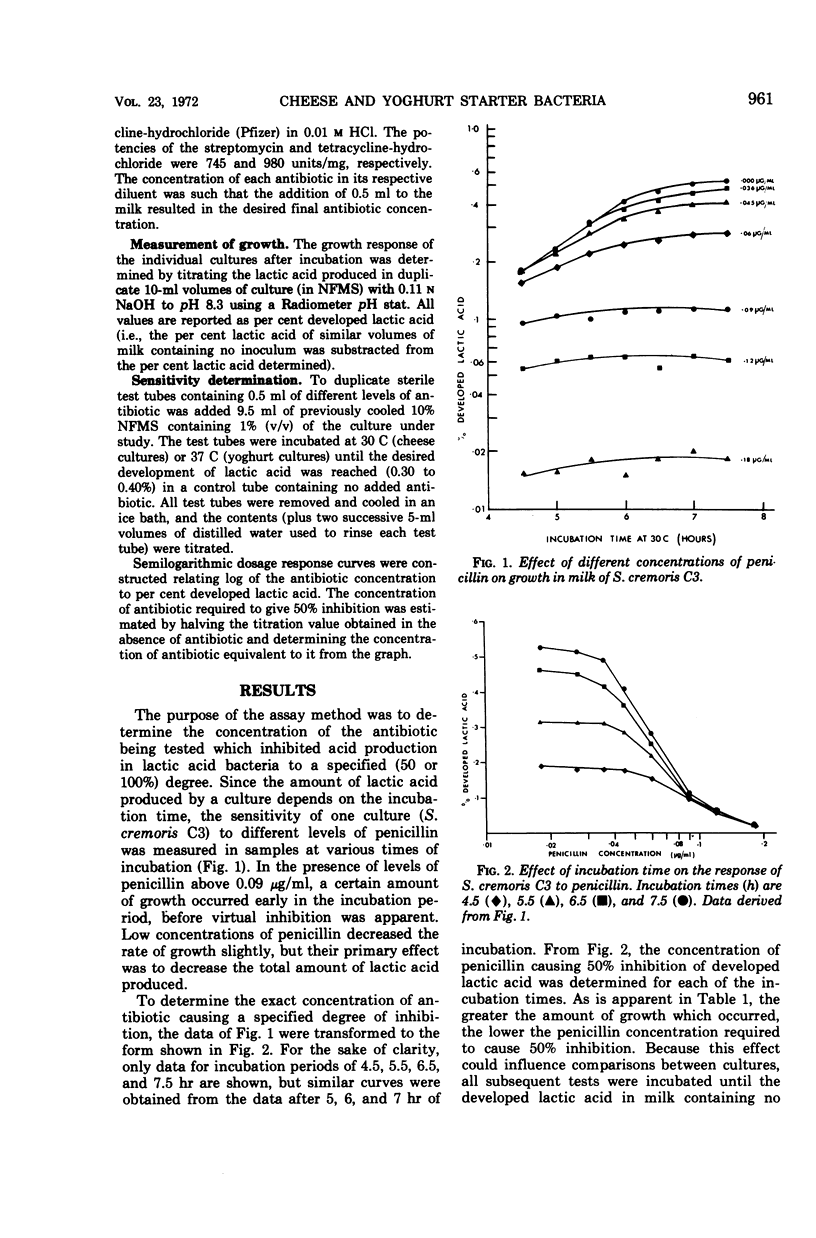
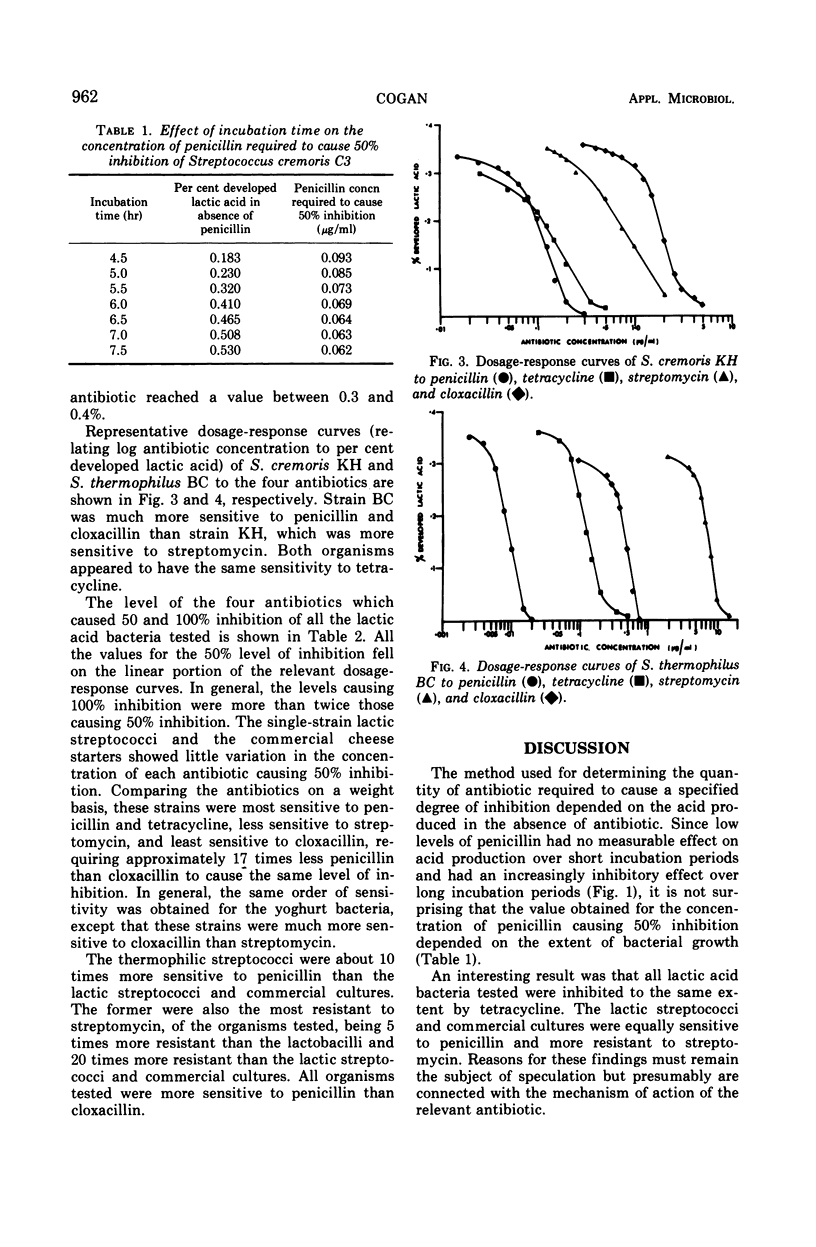
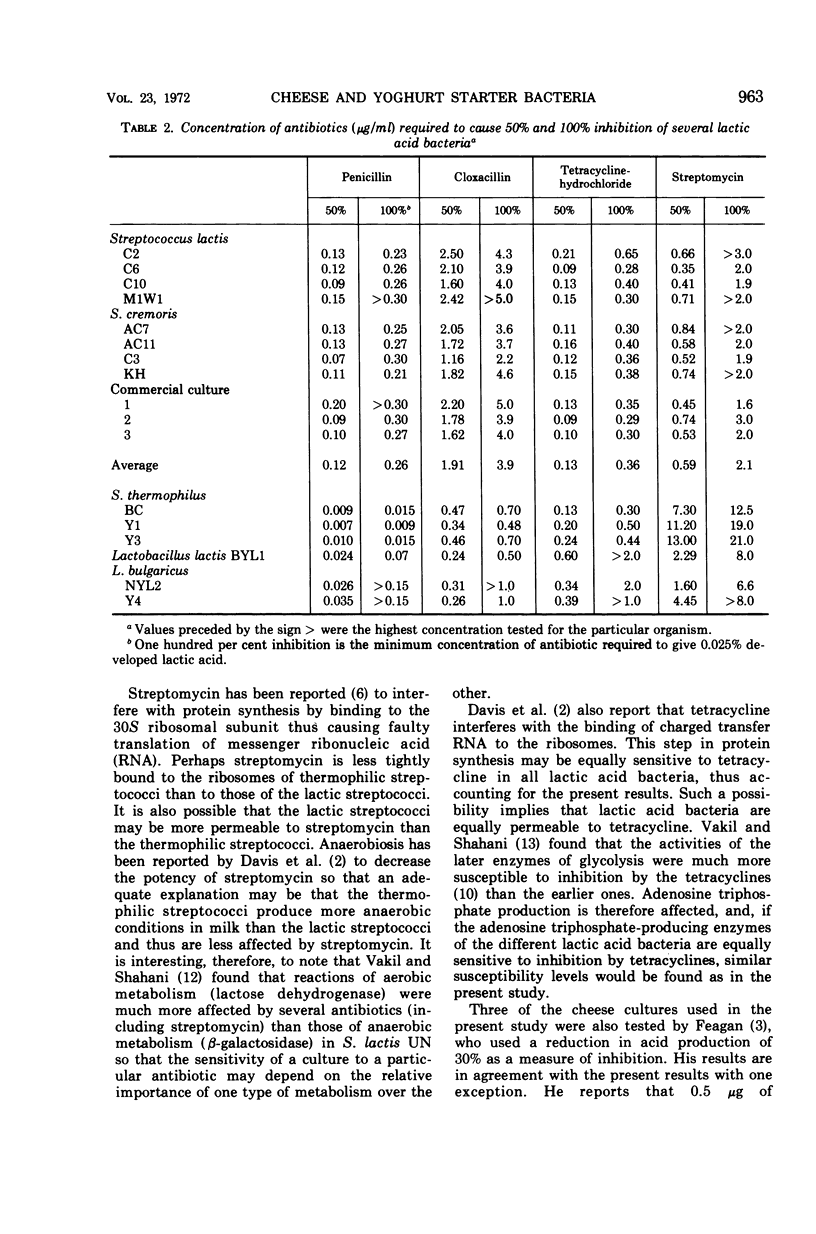

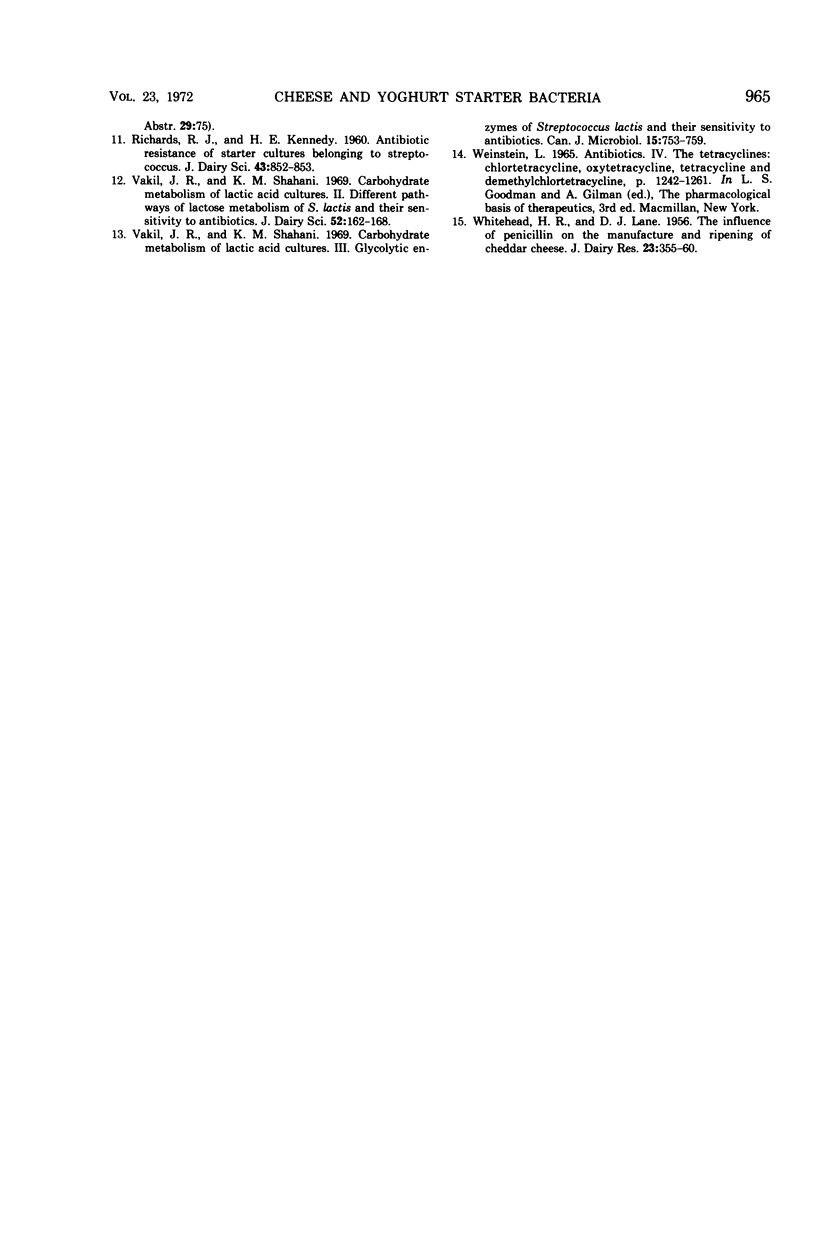
Selected References
These references are in PubMed. This may not be the complete list of references from this article.
- MARTIN J. H., HARPER W. J. Factors affecting the loss of antibiotic activity in milk. Antibiot Annu. 1958;6:890–897. [PubMed] [Google Scholar]
- Vakil J. R., Shahani K. M. Carbohydrate metabolism of lactic acid cultures. 3. Glycolytic enzymes of Streptococcus lactis and their sensitivity to antibiotics. Can J Microbiol. 1969 Jul;15(7):753–759. doi: 10.1139/m69-132. [DOI] [PubMed] [Google Scholar]


